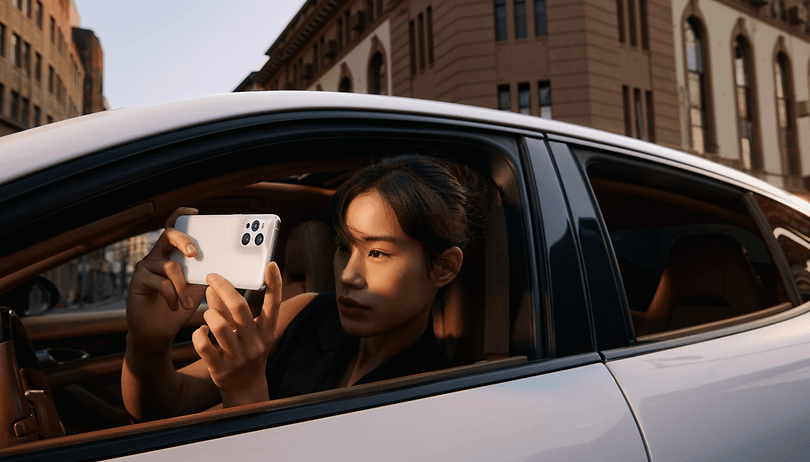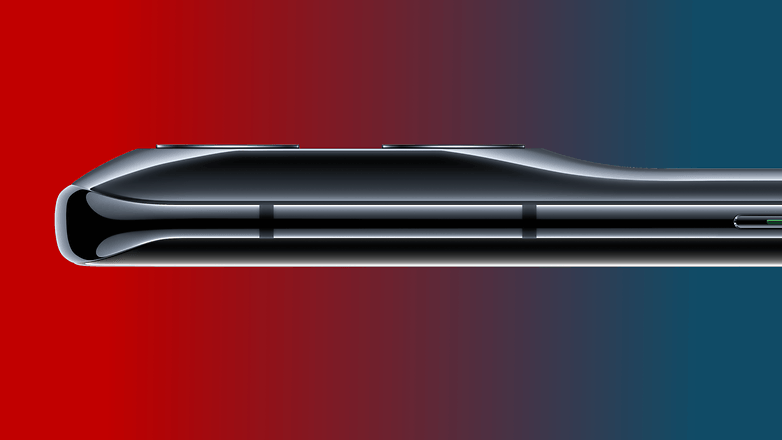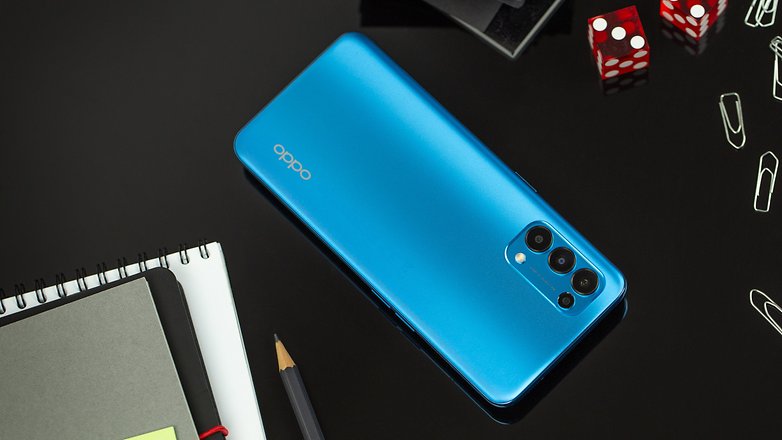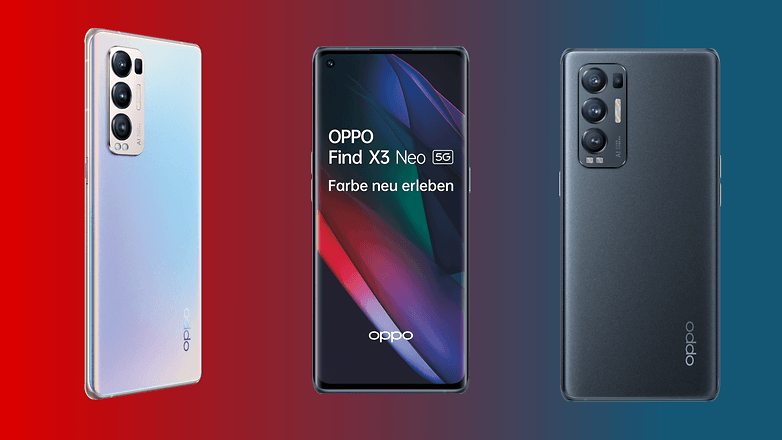Oppo Find X3: Everything you need to know


Read in other languages:
Earlier today, Oppo announced the launch of its much-awaited Find X3 series. The new lineup from Oppo includes one mid-range phone and two high-end devices. And if you were wondering what the similarities and differences between these three models are, you have come to the right place. Here's everything you need to know about the Oppo Find X3 Lite, Find X3 Neo and the Find X3 Pro.
To put things succinctly, what you should know is that the Oppo Find X3 Lite is targeted toward the mid-range crowd, while the Find X3 Neo and the Find X3 Pro boast higher-end specifications.
Take a look at the sheet below for a specs comparison.
Oppo Find X3 series: Specifications comparison
| Model | Oppo Find X3 Lite | Oppo Find X3 Neo | Oppo Find X3 Pro |
|---|---|---|---|
| Processor | Snapdragon 765G | Snapdragon 865 | Snapdragon 888 |
| Memory (RAM / Internal) | 8GB LPDDR4X / 128GB UFS 2.1 | 12GB LPDDR4 / 256GB UFS 3.0 | 12GB RAM LPDDR5 / 256GB UFS 3.1 |
| Expandable Storage | No | No | No |
| Connectivity | Dual SIM, 5G, LTE, Wi-Fi 5, Bluetooth 5.1, NFC, 3.5mm jack | Dual SIM, 5G, LTE, Wi-Fi 6, Bluetooth 5.2, NFC | Dual SIM, 5G, LTE, Wi-Fi 6, Bluetooth 5.2, NFC |
| Display | 6.43-inch, 90Hz, OLED, FHD+ with 410ppi | 6.55-inch, 90 Hz, AMOLED, FHD+ with 402 PPI, Gorilla Glass 5 | 6.7-inch, 120 Hz, AMOLED, QHD+ with 525 PPI, 10-bit with 1.07 billion colours, Gorilla Glass 5 |
| Size | 159.1 x 73.4 x 7.9 mm | 159.9 x 72.5 x 7.99 mm | 163.6 x 74 x 8.26 mm |
| Weight | 172g - 180g | 184 g | 193 g |
| IP certification | IP52 | IPX4 | IP68 |
| Camera | 64MP Main (f/1.7) / 8 MP Ultraw. (f/2.2) / 2MP Macro (f/2.4) / 2MP Monochrome (f/2.4) / 32 MP Selfie (f/2.4) | 50 MP Main Camera (f/1.8) / 16 MP Ultraw. (f/2.2) / 13MP telephoto camera (f/2.4) / 2MP macro camera (f/2.4) | 50 MP wide-angle (f/1.8 | proprietary IMX766 sensor) 50MP ultra-wide (f/2.2 | IMX766), 13 MP telephoto (f/2.4) 3 MP microscope camera (f/3.0) |
| Video | Max: 4K at 30 fps | Max: 4K at 60 fps | Max: 4K at 60 fps |
| Battery capacity | 4,300 mAh | 4,500 mAh | 4,500 mAh |
| Charging Technology | 65 W SuperVOOC 2.0 | 65 W Super VOOC 2.0 | 65 W Super VOOC 2.0 / 30 W AirVOOC |
| Materials | Polymer back (Starry Black & Astral Blue) / Glass for Galactic Silver | Glass | Curved 3D glass |
| Biometrics | In-display fingerprint sensor | In-display fingerprint sensor | In-display fingerprint sensor |
| Operating System | Android 11 with ColorOS 11.1 | Android 11 with ColorOS 11.1 | Android 11 with ColorOS 11.2 |
| Price | 449€ | 799€ | 1149€ |
| Release | Available for pre-order as of 18 March / Release on 1 April | Available for pre-order as of 18 March / Release on 1 April | Available for pre-order as of 18 March / Release on 1 April |
| Review link | Oppo Find X3 Lite Review | In progress... | In progress... |
Oppo Find X3 Pro Unboxing Video
IMX766 sensor in the Oppo Find X3 Pro
The Oppo Find X3 Pro, by far, is the most exciting of the three, and this is largely due to the fact that it is the first smartphone on the planet to use the Sony IMX766 sensor, which Sony has developed in collaboration with Oppo. This sensor is currently exclusive to the X3 Pro. Ths use of this sensor combined with the ISP on the Snapdragon 888, the 6.7-inch AMOLED display ensures that this phone manages to ensure a 10-bit workflow right from the shooting phase to the editing and viewing phase.

The phone also supports the newer HEIF and HEIC file formats, as well as a 10-bit RAW format, so that photos can be edited later with greater control using programs such as Adobe Lightroom or Skylum Luminar. Oppo also offers a display calibration mode for users with colour vision impairments. In the run-up to the launch, Oppo told us that this is achieved via a short eye test, after which the phone automatically adjusts to your eyes.
Microscope camera on the Oppo Find X3 Pro
One exclusive feature on the Find X3 Pro is the microscope camera, which basically does exactly what it says. This camera is capable of offering up to 60x magnification to show you never before seen details on everyday objects. To achieve this 60x figure, the phone uses 2x digital zoom. The lens itself, however, offers "only" 30x magnification. Do note, however, that at just 3-megapixels, the resolution of this camera is not particularly high. Do wait for our detailed review, where we will test this camera feature of the Find X3 Pro.

The other cameras on the phone include the main 50MP camera and another 50MP sensor mated to an ultrawide lens. Then there is the telephoto camera that uses a 13P sensor. This camera also offers support for 5x hybrid zoom.
Find X3 Pro: Design
As evident from the images, it is obvious that the design language that Oppo has chosen to go ahead with the Find X3 Pro is, well, bold. The camera hump design, for example, has evolved polarized responses from embers of the tech fraternity. It is notable that Oppo uses moulded glass to achieve this design trait, and the company claims that it takes a whopping 40 hours to manufacture a single glass element.

While phones with glass backs are always good to have, I'm curious about the durability factor here.
65 Watt SuperVOOC fast charging tech
For the first time, all three smartphones in the lineup offer top of the line 65W SuperVOOC 2.0 technology.

Oppo also includes the fast charger in the box with all three devices.
Oppo Find X3 Lite and X3 Neo
Looking at the spec sheets of the Lite and Neo models, the price is quite impressive. The X3 Neo rivals the recently launched Galaxy S21 in many aspects. It comes powered by the last generation Snapdragon 865 processor, which is still quite a powerful beast. Other hardware specs are also impressive - including 2GB of LPDD4 RAM, it has more RAM, Wi-Fi 6 and Bluetooth 5.2.

Moving to the Oppo Find X3 Lite, this is perhaps the most attractive phone in terms of pricing among the three and seems to be a great value with its pricing of €449. At this price, it offers a quad-camera setup, the Snapdragon 765 processor, and of course, the 65W fast charging tech. If the price of the phone drops a bit in the next few months, the X3 Neo will be an exciting alternative to the Realme X50 Pro, the Xiaomi Mi 10T.

















